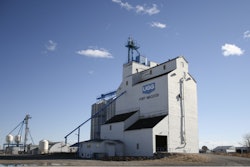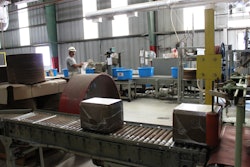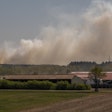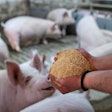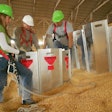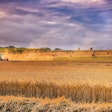Production and animal agriculture producers may or may not be shocked to discover that its organic brethren is also frequently subjected to the wrath of critics — and, often, based on similar accusations. Agvocates of all sorts can learn a thing or two from the crisis communications strategies ofOrganic Valley(OV).
两个从洛杉矶Farge营销代表,WI-based organic farm cooperative discussed their proactive approach to social media and engagement management at aSocial Media Breakfastevent held in Madison, WI. While Leslie Kruempel, OV’s social media specialist, focused on the creative business-to-consumer programs it uses Facebook and Twitter to promote, the frank discussion of the cooperative’s struggle with three social-media-fueled PR crises proved especially interesting.
格雷格•Brickl OV营销传播的导演r, explained that compared to its primary competition, a publically traded company who sources some of its organic products from factory farms (a faux pas within the organic community), OV’s dedication to organic ideology and its commitment to small family farms made the decision to enter the social sphere “a no brainer.” Today, the company has more than15,000 Twitter followersand206,000 Facebook “likes,” a fan base primarily comprised of the mothers of young children.
Social media damage control
According to Brickl, community engagement in its social space breaks into two factions: “98% Love vs. 2% Something Else.” His presentation focused on the later, highlighting three recent incidents that incited public outcry across its social media channels and how the cooperative managed the discourse.
The “Three Meltdown – 10 Months” break down as such:
- Raw milk: In late 2011, OV’s board of directors decided to uphold a long-standing tenant of its membership agreement that stipulates that all milk produced on the OV member farms be delivered to the cooperative for production and sale, measure that not only addressed supply concerns, but safe-guarding the cooperative from any potential public safety issues. “Passionate” raw milk consumers, who purchased their raw milk from these dairies, turned to Facebook for four weeks, bombarding its page with hostile commentary.
“Legit beef? Maybe. I understand that we were coming between them and their raw milk source,” Brickl said, but insisted the action was within the cooperative’s right to protect the integrity of the brand.
During this time the cooperative could not effectively use social media as a marketing tool. Even though OV had "hid" its comment wall, anytime it posted an image or a status update — regardless of the content of the post — the Facebook comment streams would be taken over by the raw milk advocates. As a result, the marketing team spent a lot of energy responding to the negative feedback.
- Egg/hen + PETA: After treehugger.comandPETAposted apicturepurported to expose a subpar OV egg laying facility, consumers leveled an attack on OV’s social sites yet again.
“They weren’t our chickens, it wasn’t one of our farms, but we spent another month dealing with consumer vitriol,” said Brickl, he noted that Organic Valley strictly abides by organic poultry standards.
- Coexistence: In 2010, OV’s CEO met withSecretary Tom Vilsackand biotechnology to discuss the deregulation ofgenetically modified alfalfa, a staple of a dairy cow's diet. While OV advocated to keep GM alfalfa illegal, once the USDA took that option off the table, OV advocated for very strict restrictions. OV’s acceptance of coexistence and itswillingness to work with biotechand the USDA led to the cooperative’s latest social media challenge as angry followers insinuated OV “was in bed with Monsanto,” a claim the cooperativevehemently denies.
“Anybody who knows anything about us knows we’ve spent the entirety of our existence fighting for a food system that is the antithesis of what Monsanto stands for,” Brickl asserted.
The marketing team deems the severity of this ongoing issue a 10 because they have come under attack from many angles, and incorrect Internet articles are difficult to rebut when the source is not a legit news outlet.
Social crisis communications tactics
“We learned very quickly that we needed to establish a plan,” Brickl said. He suggests that companies have a social media crisis communications plan in place prior to an incident. Here are the actions OV took to manage the various issues it has faced:
- Stick to the plan, but be ready to change it for effect
- Respond to every complaint quickly
- Formulate responses not just for the one, but for many (the people reading the feed)
- Do not use robotic PR speak
- Do not censor posts or ban users unless they violate etiquette guidelines
- Tell the truth!
[Source: Organic Valley's “Social Media and Food” slideshow.]
One tactful way to address individuals determined to derail productive engagement is to develop andpost etiquette guidelines on the siteas you “can’t ban someone unless you’ve given them the rules.” Brickl advises page administrators not block or delete the comments of its critics; however, should it need to block unruly commentators, these guidelines will support that action without reeking of censorship.
In the end, it’s the responsibility of all producers — organic or not — to educate consumers about the truths of farming and agribusiness rather than allow misinformed detractors to control perceptions. Social media offers the direct messaging opportunities and instant feedback unrivaled by traditional advertising and public relations campaigns.
Additional take-a-ways from the presentation:
- Not everyone knows the difference between pasture butter and regular butter. Consumers and producers debate the differenceshere.
- To evoke comments and engagement, don’t be afraid to post cutesy photos and light-hearted banter to add character to the brand as demonstratedwith this image.
- If there is a Social Media Breakfast in your area, it’s free so I suggest you attend. Visit the website or “like” it on Facebook for a list of events.
To view a photo gallery from the event, visit Social Media Breakfast Madison’sFacebook album.






